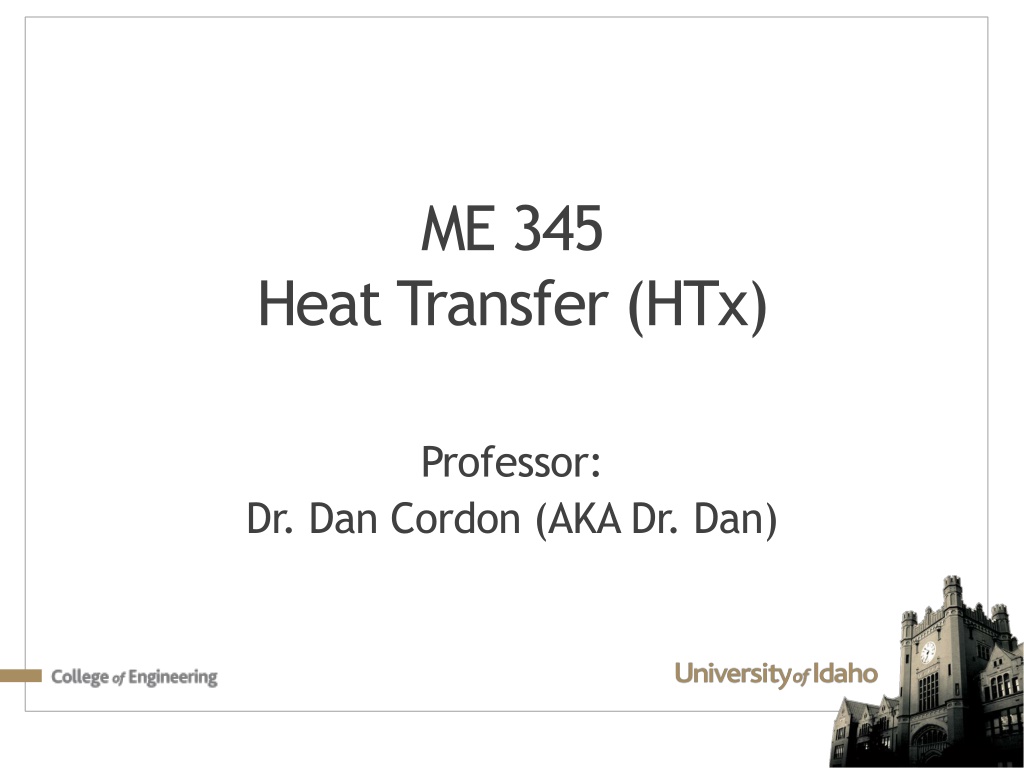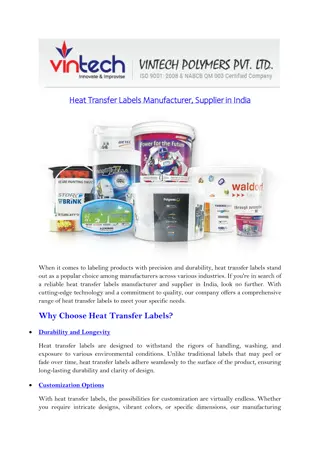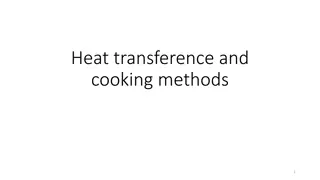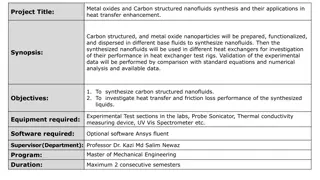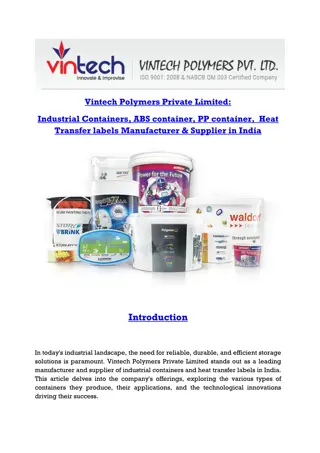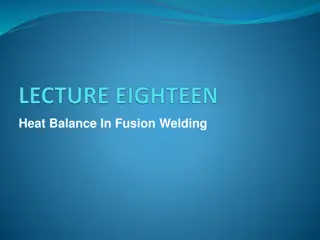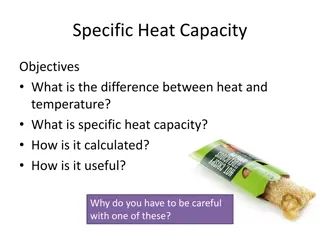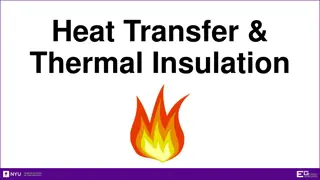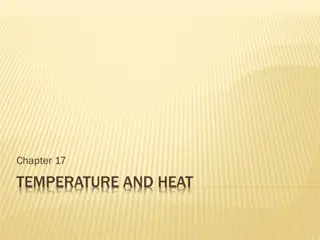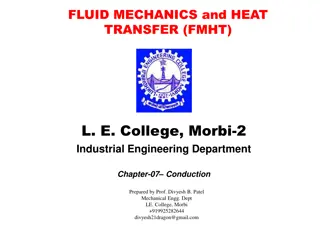Understanding Heat Transfer in Engineering Systems
Exploring the fundamental concepts of heat transfer and thermodynamics, this collection of images and explanations delves into the processes governing temperature change, energy transfer, and the analysis of systems based on the conservation of energy. From distinguishing between heat transfer and thermodynamics to elucidating the role of thermal energy and radiation rate equations, these visuals provide a comprehensive overview of key principles in the field. Additionally, the methodology of applying the First Law of Thermodynamics for system analysis is outlined, offering insights into modeling transient and steady-state heat transfer scenarios in engineering contexts.
Download Presentation

Please find below an Image/Link to download the presentation.
The content on the website is provided AS IS for your information and personal use only. It may not be sold, licensed, or shared on other websites without obtaining consent from the author. Download presentation by click this link. If you encounter any issues during the download, it is possible that the publisher has removed the file from their server.
E N D
Presentation Transcript
ME 345 Heat Transfer (HTx) Professor: Dr. Dan Cordon (AKA Dr. Dan)
HTx vs. Thermodynamics Consider a hot lump of metal placed in a cold liquid bath Thermodynamics Will predict final temperature Will predict total energy transferred between the metal and liquid Does *not* predict how long the process will take Heat Transfer Will predict temperature of metal as a function of space and time Will predict temperature of liquid as a function of space and time Does provide information about the time rate of change
Vocabulary Clarification Thermal Energy Thermal energy is associated with the translation, rotation, vibration and electronic states of the atoms and molecules that comprise matter. It represents the cumulative effect of microscopic activities and is directly linked to the temperature of matter. Heat Transfer Heat transfer is thermal energy in transit due to a temperature difference.
Alternative Radiation Rate Equations Note the different subscripts for convection and radiation ?? - Surface Temperature ? - Ambient Temperature (region unaffected by the surface) ???? - Surrounding Temperature (temperature of radiation source/sink)
CONSERVATION OF ENERGY (FIRST LAW OF THERMODYNAMICS) The Heat Equation is simply application of First Law to a control volume *or* control surface Solving the Heat Equation is how we get the temperature profile of a system. Alternative Formulations Time Basis: At an instant Over a time interval Type of System: Control volume Control surface
METHODOLOGY OF FIRST LAW ANALYSIS On a schematic of the system, represent the control surface by dashed line(s). Choose the appropriate time basis. Identify relevant energy transport, generation and/or storage terms by adding labeled arrows on the schematic. Write the governing form of Conservation of Energy. Substitute appropriate expressions for terms of the energy equation. Solve for the unknown quantity.
Example 1.4 Thermal response of a conductor with Ohmic heating (volumetric heat generation) Find the equation for the change in temperature over change in time (dT/dt) Choose a section of wire as our control volume. Use rate form (instant in time) for our time basis (because of known variables) Some assumptions we will use are: Volumetric heat generation provides uniform temperature distribution (spatially) Properties like density, specific heat capacity, and thermal conductivity remain constant Use simple form of radiation equation (surroundings are large and uniform Tsur)
Example 1.4 Identify storage, generation, and transport terms Write out conservation of energy equation Find expressions for each term
Example 1.4 Substitute back into the energy equation Since we want to find dT/dt, do some algebra in the above equation to get
Example 1.4 What now? Could solve for steady-state temperature of the wire/conductor Would need to have information about many of the variables Tsur D, Re , epsilon, h, rho, and c Could then plot SS temperature as a function of electrical current! Since we want to find dT/dt, do some algebra in the above equation to get If we want the Steady-State temperature we let dT/dt = 0 becomes Didn t need rho or c to get SS temperature!
Example 1.4 Assume copper, a room temperature of 300 K, and a 1 mm diameter wire Assume moderate airflow in the room which would give a convection heat transfer coefficient of 100 W/(m2 K) the curve would look like: If desired max temperature of wire is 60 C, maximum safe current would be 5.2 amps
THE SURFACE ENERGY BALANCE A special case for which no volume or mass is encompassed by the control surface Conservation of Energy (Instant in Time): ?in ?out= 0 With no mass and volume, energy storage and generation are not pertinent to the energy balance, even if they occur in the medium bounded by the surface. (Applies for steady-state and transient conditions.) Consider surface of wall with heat transfer by conduction, convection and radiation. 2 ?cond ?conv ?rad = 0 ??1 ?2 4 4 ?sur ?2 ? ?2? ?2 = 0 ?
